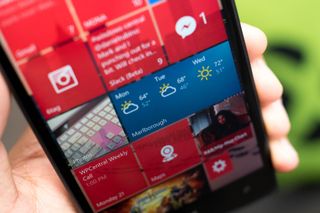Why your old Windows Phone won't support Continuum

In Windows 10 Mobile, Microsoft is re-imagining its mobile operating system. In this new version, Microsoft is adding many changes and improvements that surely seems will help Windows 10 to get back into the mobile space.
One of the new features the software giant is bringing to Windows 10 Mobile is Continuum for phones. This feature gives the ability to connect a mouse, keyboard, and external display to the handset to turn your phone into a near PC-like experience.
However, it's important to note that you will still be using a phone operating system. This caveat means that you won't be able to install and use traditional desktop applications (unless you can use a remote desktop app to access your primary computer). Instead, you'll be running universal Windows apps from the Store.
Windows Continuum - All you need to know
Users will also notice that Microsoft is trying to differentiate the Continuum for phone and the Windows 10 for PC experiences by making the mobile desktop environment similar to the elements you'll find in Windows 10 Mobile and not quite similar to the elements of Windows 10 for PC.
Microsoft demo on Continuum for phones
Continuum will allow users to multitask like never before on a phone. Users will be able to run up to two apps, such as Excel Mobile on the big screen and PowerPoint on the phone's display. Perhaps one of the best features about Continuum is that you can still use your phone to make calls, watch a video, and more while editing a spreadsheet on the external monitor.
Get the Windows Central Newsletter
All the latest news, reviews, and guides for Windows and Xbox diehards.
Microsoft is aiming Continuum for a productivity solution and for emerging countries where sometimes the phone is the only computing device in the house. However, there is a big catch: to drive all the pixels for multiple displays requires new capable hardware.
Unfortunately, this hardware is not available on any of the current Windows phones. Instead, according to Microsoft you need a phone that meets the minimum hardware requirement, which is a Qualcomm Snapdragon 808 MSM8992 or MSM8994 chipset. As such your older phone won't support Continuum even though chances are it will support Windows 10.
If you have a Windows phone prior to the release of Windows 10 Mobile, and you want to use Continuum, you will need to buy a new phone.
If you're looking to use the new feature on the mobile operating system, Microsoft has just announced the Lumia 950 and Lumia 950 XL, and both phones not only include support for Continuum, but they also support Windows Hello to sign-in to Windows 10 hands-free and securely without complicated passwords, 3GB of RAM, 32GB of Storage, and 20-megapixel rear-facing camera.
The main differences between both phones are the screen size and the Qualcomm Snapdragon processor. The Lumia 950 has a 5.2-inch display running the Snapdragon 808 processor, and the Lumia 950 XL has a 5.7-inch display running the Snapdragon 810 processor.
Microsoft also announced the Lumia 550, which is a more affordable phone, but again this handset doesn't meet the minimum requirements for Continuum.
Finally, if you're planning to upgrade your phone, don't forget to read our previous article on how to sell your old Windows Phone after you get the new phone.
Mauro Huculak is technical writer for WindowsCentral.com. His primary focus is to write comprehensive how-tos to help users get the most out of Windows 10 and its many related technologies. He has an IT background with professional certifications from Microsoft, Cisco, and CompTIA, and he's a recognized member of the Microsoft MVP community.

